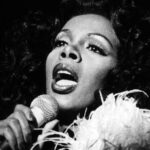Wiz Khalifa’s infectious hit song, “Black and Yellow,” transcended the music charts to become an unexpected anthem during Super Bowl XLV. As the Wall Street Journal first reported, this catchy tune became the unofficial fight song for both the Pittsburgh Steelers and the Green Bay Packers, a rare moment of musical unity in the typically divided world of sports rivalries.
Every Super Bowl contender traditionally boasts a team-specific fight song to rally fans and players alike. However, the 2011 Super Bowl witnessed a unique phenomenon: supporters of both the Steelers and the Packers found themselves singing along to the same melody – the undeniably catchy rhythm of “Black and Yellow.” This Pittsburgh-bred anthem, originally a tribute to the city’s colors, unexpectedly resonated far beyond its hometown.
At the time of the Super Bowl buzz, “Black and Yellow” was riding high on Billboard’s Hot 100 chart, peaking at number one and solidifying its status as a national pop sensation. Its broad appeal extended beyond casual listeners, quickly capturing the spirit of sports fans across the nation. The Journal highlighted the widespread adaptation of the song, noting numerous fan-created versions and remixes tailored to represent various teams’ colors. Notably, Green Bay Packer fans embraced the tune with fervor, generating at least three distinct “Green and Yellow” renditions to cheer on their team.
Despite its deep connection to Pittsburgh, the lyrics of “Black and Yellow” are not explicitly football-themed, nor do they mention “Pittsburgh” or the “Steelers.” This ambiguity arguably contributed to its widespread adoption. Wiz Khalifa, born Cameron Jibril Thomaz, acknowledged the song’s Pittsburgh roots in an interview with the Wall Street Journal, stating, “I definitely wrote it with Pittsburgh pride in general. In everything I do I want to represent my city.” He expressed surprise, yet gratitude, at the song’s enthusiastic reception, particularly its adaptation by fans outside of Pittsburgh.
Khalifa also voiced his appreciation for the numerous team-based remixes, stating, “That’s cool, just the fact that people want to grab onto it and represent it. But as far as Black and Yellow goes, there’s only one, and everyone knows what I’m talking about.” This playful acknowledgement underscored the song’s unique position as both a personal anthem for Pittsburgh and a universally adaptable sports rallying cry.
Mikey Dougherty, a morning show host on Pittsburgh’s popular radio station KISS-96.1, further emphasized the song’s unprecedented impact. “I don’t think there’s ever been a song like this,” Dougherty observed, highlighting the wave of local adaptations. “Every city is adopting their own version, and it’s almost like a challenge to do the best one.” This “challenge” of creating team-specific versions of “Black and Yellow” solidified its place as a cultural phenomenon, proving the song’s remarkable ability to unite diverse fan bases under a shared musical banner, at least for the duration of Super Bowl season. “Black and Yellow” remains a testament to the power of music to transcend boundaries and unexpectedly become the soundtrack to major cultural moments.


